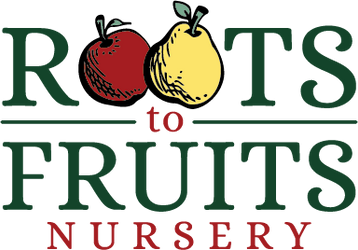Site Selection
Once you’ve decided which fruit you want to grow and purchased your trees, it’s time to pick a site for your orchard. Choosing where to plant your fruit trees carefully will set you up to have a productive orchard for years to come.
Fruit trees grow best in full sun and in well-drained soil. Look for a location that has:
- Well-drained soil. If rainwater regularly puddles in an area, it’s not a good place to plant your trees. Fruit trees like deep, loamy soil that retains some moisture, but doesn’t stay soggy.
- Full sun. Your fruit trees need a minimum of six hours of direct sunlight to produce high quality fruit. Avoid planting your trees in the shadow of other mature trees and look out for black walnuts, in particular-they tend to kill fruit trees.
- Sunny north-facing slopes are ideal. It may sound counter-intuitive, but in the Upper Midwest, north-facing slopes experience fewer potentially damaging temperature fluctuations in the spring as fruit trees come out of dormancy. If you want to delay an early blooming tree, plant on the north slope.
- South-facing slopes get more sun and warm up faster in the spring, but the temperature fluctuations can damage the trunks of the trees. If you want to help a late blooming tree bloom early, plant on the south slope.
- Good air flow. Gentle rolling hills are the perfect topography for an orchard because it keeps the cold spring air moving. The best spot is along the slope, just down from the crest of the hill. You want to avoid planting trees in spots at the very top of a hill where they’ll be exposed to frigid winter winds or deep in the valleys between hills where the tree will be susceptible to spring frosts.
Do you need help planning your orchard? We are here to help!
CONTACT US
Keeping Out the Deer and Other Animals
Critters enjoy fruit just as much as we do. Go figure. To keep deer, rabbits, and rodents away from your fruit, consider installing a fence. At a minimum you will need to use tree guards, particularly in areas close to woods or shrubbery where animals live. Clear out
brush and cover to minimize places where animals can inhabit to protect them from small intruders.
Dwarf vs. Semi-Dwarf vs. Standard Trees
To dwarf or not to dwarf? That is the question.
Dwarf Trees
Dwarf trees grow between 8-12 feet without pruning. They produce apples more quickly than other varieties, but require support structures and pest control measures. Dwarf trees generally come in fairly common rootstocks.
Semi-Dwarf Trees
Semi-dwarf trees grow between 12-18 feet. They produce apples after 3 years and then a healthy crop annually or biannually thereafter. Bigger trees means more apples, but harvesting can be slightly more labor intensive. You’ll find the largest variety of rootstocks in the semi-dwarf trees, including several cold hardy varieties.
Standard Tree
Standard trees grow to 20 feet and beyond. Once they are established, they will produce fruit biannually, every two years. You’ll need ladders to harvest the apples off of standard trees. These trees are excellent shade trees and often used in food plots for hunting.
High vs. Low Density Orchard Systems
Decisions about how close together should you plant your trees,
High Density
Most modern commercial orchards use a high density system, with trees planted as close as 18 inches apart. This type of orchard usually has just 1 or 2 varieties of trees for specific production purposes. Pollinators are used throughout. High density orchards require intense weed and bug control. For commercial orchards, this system offers the best “bang for your buck.”
Low Density
Most non-commercial or pick-your-own orchards follow a low density system of planting. Trees may be spaced to any size in this system. Low-density orchards are more aesthetically pleasing and accessible for agri-tourism activities. This type of system is best for backyard or “gentleman’s” orchards.
Commercial vs Residential
Most residential orchards have fewer than 25 trees, spaced so that residents can mow between the trees and use their yard. Kids and dogs need to be able to run around the trees. There may be a wide variety of trees in a small space.
Commercial orchards tend to have fewer varieties of trees but more of them. Of course there are exceptions to this, but high density commercial orchards prioritize production over visual appeal in the landscape. While the effort per tree is smaller, the overall effort is generally greater.
Food and Gentlemen’s Plots for Hunting
We can design and plant food plots to attract wildlife to your land. We offer tree packages that include apples, pears, crabapples, nut trees, and oak trees, based on your location and zone.
Organic Orchards
We can discuss organic sprays and trees that are naturally disease resistant that will work well in your organic orchard. Varieties and rootstock are the most important start of an organic orchard.

